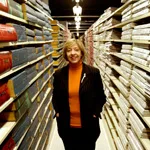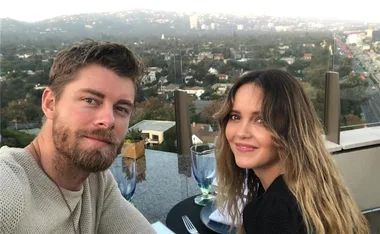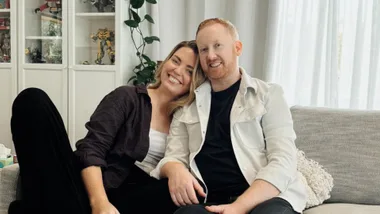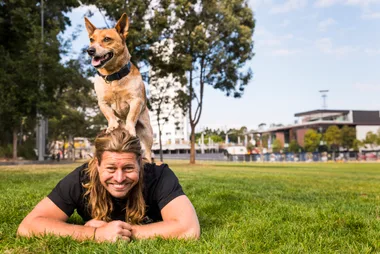Australian women are renowned for breaking down barriers. Here, Sue Williams talks to trailblazing women in myriad fields of endeavour about their setbacks and successes.
First aboriginal film star — Rose Kunoth-Monks
“It was life-changing,” says Rose, now 70. “It never changed me from being an Aboriginal person and it never changed me at the time, as I just went back to school afterwards, playing rounders and hitting other kids around the legs with hockey sticks.
“But it made me aware of a world outside of the Alice Springs region and it made a lot of others aware of us.”
Jedda, which was also released in the US, told the story of an Aboriginal girl raised by whites who was kidnapped by a traditional Aboriginal man, played by Robert Tudawali. Although many people assumed Rose had also been part of a white family, she simply went to an Anglican church school.
She was actually born of the Anmatjere tribe at the Utopia community, 200km north-east of Alice Springs, and was brought up by her parents to be aware of the fight for the rights of indigenous people. Her father was a survivor of the 1928 Coniston Massacre in the Northern Territory, the last known mass murder of indigenous Australians, which is believed to have left up to 110 Aboriginal people dead, in retribution for the death of a white dingo hunter.
“That was the greatest influence on me personally,” she says. “I don’t think any of us at the time realised the magnitude of being in a feature length film. But in hindsight, it was the story of our lives and it was the story of the Stolen Generations that is still with so many of us now.”
While her grandchildren are still dazzled by the image of their grandmother as a beautiful film star, Rose says her role didn’t make her life any easier afterwards. At that time, Aboriginal people weren’t allowed to be in town after sundown without a pass and their every movement was severely restricted. Her co-star, Robert, died a violent death 12 years later, after skirmishes with the authorities and turning to alcohol.
“We weren’t free agents,” says Rose who is now a respected indigenous leader. “What has driven me ever since have been social justice issues in Australia and racist policies that have hurt my people.”
At the end of August, Rose retired from her position as chair of the Batchelor Institute of Indigenous Tertiary Education, although she still serves as the director of the management board of the Desert Peoples Centre and works as an official visitor to the Alice Springs prison, is chair of the Atikirra Aboriginal Corporation and as an interpreter.
“I’m lucky to have been a part of an ancient culture that has survived,” she says. “I treasure it. Australia has to learn to value its ancient race of people and give them back a bit of dignity.”
First Miss Universe, Jennifer Hawkins
“I think whenever you get an opportunity, such as Miss Universe, you then have to back it up with a lot of hard work and the right work ethic to keep it going,” says Jennifer, 24. “I certainly didn’t expect the contest to have such an impact on my life. But I’ve had such a great time since and am really enjoying it.”
Jennifer made a huge splash from the first moment she was declared the surprise winner of the title, being christened “The Thunder from Down Under” by the show’s host and then being described by an obviously bewitched pageant co-owner Donald Trump as “the most beautiful Miss Universe I have seen in many, many years”.
Yet no one could possibly have foreseen the success Jennifer has had since. She became a regular presenter on the Seven Network’s travel show, [itals]Getaway, and the host of its newest program, Make Me A Supermodel, and is said to be continually fending off offers for overseas acting roles, having reportedly turned down a role in the movie Pink Panther 2 because of a schedule clash. As the $4million face of Myer department stores, she’s also constantly on our TV screens and is now hoping her new beach collection will enable her to triumph in yet another area. “I only really entered the [Miss Universe] contest in the first place because I wanted to travel,” admits the former rugby league cheerleader and model who hails from Newcastle, NSW. “It was being held in Ecuador, where I wanted to go, and I thought that would be a great three weeks. I even had to get a passport to go, as I’d never had one before.”
Since then, life has been a veritable whirlwind and Jennifer says she considers herself simply lucky in how things have turned out. While her blonde, blue-eyed good looks have obviously helped, it’s her personality that has proved so irresistible for the public and corporates alike.
When she managed to laugh off a wardrobe malfunction during a modelling gig at a Westfield shopping centre, that left her walking up the catwalk in a red thong, she instantly won a crowd of new fans. “It has been difficult at times,” says Jennifer, who’s been dating model Jake Wall, 25, since before she entered the Miss Universe contest. “The first year and then the six months when I came back to Australia after the spell in the US, I found it very different. I was a bit overwhelmed by it all. But when I finally got used to it, I learned how to separate my public life from my private life. I talked to Mum and Dad a lot about it, and worked out how to make my family and private life my own. I also learnt how not to sweat the small stuff. I found it wasn’t worth worrying about some things. That was the best advice I ever received — and pass on to others.”
First female head of the National Library— Jan Fullerton

As Australia’s first female director of the National Library, Jan Fullerton’s life is full of extraordinary surprises. The biggest came last year, when she took possession of the oldest item ever printed in Australia: a tiny playbill dating back to 1792.
“It was discovered last year by the National Library of Canada,” says Jan, who’s been director-general of our National Library, with its more than nine million items, since 1999. “It’s so exciting to have found this. There’s such a diversity of collections here and every single item has a story.”
Jan, who’s been at the library for 41 years, was never in any doubt what she wanted to do with her life. She decided she wanted to work in a library even before she had ever been in one. She was simply entranced by the little shelf of books in her primary school in the then tiny town of Beerwah on the Sunshine Coast hinterland of Queensland.
“But these days, running libraries isn’t so much about books,” she says. “That’s just part of it. Libraries have millions and millions of individual items and we have to manage them, so that people can find something they’re looking for and access it easily. It’s a big exercise in logistics.” In that area, Jan, 62, has been recognised internationally as a true pioneer. She has led the world in the development of a wide range of digital services and initiatives, including the establishment of the PANDORA archive. “Very early, we recognised the fact that the world is turning digital and we had to convert the huge number of things existing in print into a digital form,” she says.
“That means converting old print collections into digital and also making sure that every issue of every newspaper in every state and capital is now also captured digitally. They’re sent to India to be OCRed [a process using Optical Character Recognition] and the headlines keyed in.”
The rate of information being published on the internet is also growing exponentially and, far from being daunted by its volume, Jan has been similarly determined to preserve as much as she can. As a result, she managed to take what’s effectively a snapshot of the entire web of Australia, to keep it for both posterity and as a source of information for future generations.
In addition, she has been at the forefront of creating links between different nations’ libraries, helping to raise ones in the Pacific to international standards and protect the collections of those in war and disaster zones. “It’s important that this information is safeguarded and that people have access to it in the coming years,” says Jan. “A lot of people don’t want to be librarians, they just want to be able to find out what they want, quickly.”
And, of course, there are a few perks to the job. As well as the old playbill, securing previously unknown Patrick White papers and discovering the exquisite watercolours of a midshipman who travelled to Australia in the First Fleet, she was also a member of the library’s champion trivia team. “We were quite successful,” she says, laughing.
OTHER FEMALE FIRSTS
Jennie George was the first female president of the ACTU, serving for four years from 1996. Now 61, she has been a Labor MP since 2001, representing the seat of Throsby in NSW.
Betty Churcher was the first female director of the National Gallery of Australia, where she earned the moniker “Betty Blockbuster” for her love of big exhibitions. Now 77, she is also an artist in her own right and has written several books about art.
Mary Gaudron was the first female judge of the High Court of Australia, best known for the Mabo case, in which she declared that the treatment of Aboriginal Australians was “the darkest aspect of the history of this nation”. Previously, Mary, now 65, had been the first female solicitor-general in the country, presiding over NSW.
Cathy Freeman became the first ever Aboriginal Commonwealth Games gold medallist, by helping win the 4 x 100m relay in Auckland, New Zealand, in 1990, and was the second indigenous Olympic champion after winning the 400m at the Sydney Olympics in 2000, carrying the Aboriginal flag around in her victory lap. Now 35, she retired in 2006.
Evonne Goolagong Cawley was the first Australian Aboriginal woman to achieve international fame in sport after winning 14 Grand Slam tennis titles, seven of them in singles, with four Australian Open wins, two Wimbledon and one French Open. Now 57, she was the world’s number one female tennis player in the 1970s.





.png?resize=380%2C285)



























































